
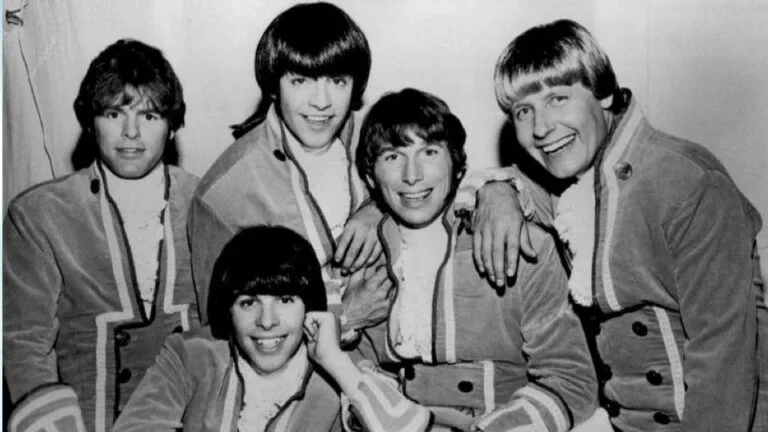
So, there is this story that has been often told about guitarist Drake Levin. I don’t know if it’s a true story or not, but this is how the story goes.
In 1964 Drake Levin, lead guitarist for Boise, Idaho based garage band Paul Revere and the Raiders, was playing with the group at The Spanish Castle Ballroom in Seattle, Washington. Barely eighteen years old at the time, Drake had been with the group for about a year, and despite their reputation as a hardworking and exciting rock ‘n’ roll outfit, Paul Revere and the Raiders were still chasing their first big hit and had not yet achieved national fame. But Drake had already proven himself to be an extremely inventive guitar player who stood out with his over the top antics. From picking the strings with his teeth, to playing the guitar from behind his head, Drake also practiced a synchronized two step dance with bassist Phil “Fang” Volk and would often finish sets by climbing on top of the amplifier and launching himself off.
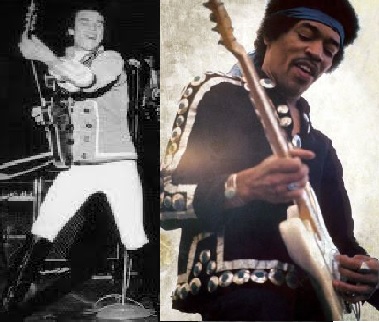
Well, on that particular night in Seattle, Drake noticed a man intently watching him from the side of the room, standing apart from the audience which was going wild down in the front. The piercing eyes of the watcher followed Drake with every strum, every movement and every guitar trick. After the set, the intense man, who was noticeably older than Drake, approached him and said “You’re a great guitarist. I’m really inspired by the way you handle the guitar.” Drake thanked him, and the two talked a bit about guitars, and Drake showed him how he did some of the outlandish tricks that he was doing on stage. After they talked for a while, it was time for the next act to go on and Drake asked the man what his name was. “My name is Jimi Hendrix” the man answered, and he and Drake shook hands and parted ways. Three years later, Jimi Hendrix was on the Monterey Pop Festival stage, picking the strings with his teeth, playing the guitar behind his head and launching himself off of amplifiers. The influence of Drake Levin was all over Jimi Hendrix’s performance, but Drake’s time with The Raiders was long over. Today music fans around the world celebrate the legacy of Jimi Hendrix, but Drake Levin has slipped between the cracks of music history. But, for the most part, so has the entire legacy of Paul Revere and the Raiders, who continue to be the most underappreciated rock n’ roll group of the 1960’s.
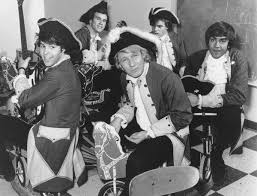
A perennial musical obsession of mine, I truly believe that Paul Revere and the Raiders are the greatest band that people are not listening to. With nine top twenty hits on the Billboard charts between 1966 and 1971, The Raiders were a consistent part of American culture during the later half of the era. There are a number of possible reasons why The Raiders have failed to reach any sort of monumental legacy within music history, which I documented in my original Paul Revere and the Raiders Vinyl Story, “Paul Revere and the Raiders – Something Happening (1968).” Be it their Revolutionary War gimmick, close relationship with Dick Clark Productions, the widespread misconception that they were a bubblegum group, their reputation as being an unfunny comedic band or the eventual breakdown between The Raiders’ two primary members, Mark Linsday and Paul Revere. The Raiders have yet to get the widespread respect that they deserve. However, one of the factors that may have hurt the perception of legitimacy of The Raiders as a cohesive band was the major lineup change that they went through at the zenith of their career. Just as the band was hitting their biggest heights, the backline of the band, guitarist Drake “the Kid” Levin, drummer Mike “Smitty” Smith and bassist Phil “Fang” Volk walked away from the massively successful group. Suddenly Paul Revere and the Raiders went from being a dynamic five piece rock n’ roll entity, to Revere and Lindsay and the “hired help.” To the fans, Drake, Smitty and Fang were as beloved as the group’s two leaders and essential to The Raiders’ climb to the top. But, ever since they took off their three cornered hats, these should be rock ‘n’ roll icons have been floundering in obscurity. All amazing performers and excellent showmen, they deserve so much more than that.
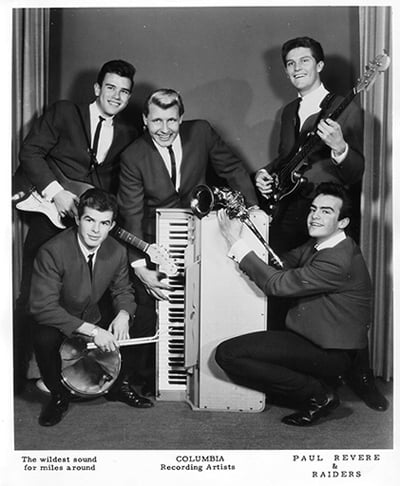
Established in 1958 in Boise, Idaho, Paul Revere and the Raiders was formed by young restaurateur and keyboardist Paul Revere Dick (his last name was wisely discarded immediately) as an instrumental group calling themselves The Downbeats. Joining up with charismatic saxophonist Mark Lindsay soon after the formation of the band, the two became partners in managing the group and soon went from performing covers at frat parties and school dances to gaining a reputation as a hard working and unhinged garage band with an electric sound. Changing their name to The Raiders in 1960, the band had some minor successes on the Billboard Charts, most notably an instrument called “Like Long Hair” in 1961, but via constant personnel changes, combined with Revere spending time in the National Guard, The Raiders found it difficult to get a foot up in the music scene.
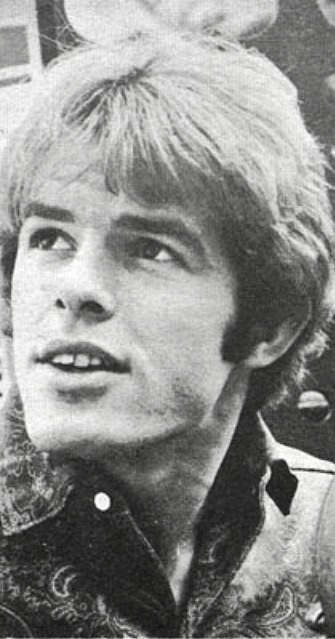
The classic line up of The Raiders began to come together in 1962 when Revere and Lindsay moved the group to Portland and got a regular gig at a teen club called The Headless Horseman. Partially owned by young entrepreneur Mike Smith, the co-owner sat in with The Raiders on the drums one night when their regular drummer declined to show up for the gig and quickly became a full member of the group. Gaining the moniker “Smitty,” Smith was known for his outlandish sense of humor as well as being a solid drummer who could play anything from rock n’ roll, country, r&b and jazz.
In 1963, during a gig back in Boise at Paul’s nightclub Le Crazy Horse, Paul and Mark met high school pals Drake Levin and Phil Volk. Playing guitar together since they were fourteen, Drake and Phil were in a group called Sir Winston’s Trio who had moderate success in the area. Only sixteen at the time, Drake had gained a reputation in Boise as one of the top guitarists in the local scene, and Paul offered Drake and Phil a gig at the club as a duo. However, feeling that they needed a drummer, they asked if they could borrow Smitty for a few gigs. Thus, in the summer of 1963 the “Brotherhood” of Volk, Levin and Smith came together for the first time in a series of performances under the name The Surfers. Ironically, the trio did not play surf music, nor did any of them surf, and Idaho is land locked anyways.
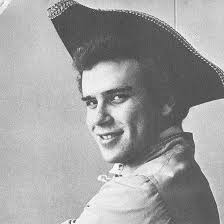
Not long after, The Raiders had lost another guitarist, and Paul set his sight on Drake as a replacement. In an unorthodox move, Paul went to the Levine home and asked Drake’s mother for permission before asking her son to join his group. When she agreed, he pretty much told Drake to pack up his guitar because they were going on tour. Due to being notably younger than the rest of the group, Drake got the nickname “The Kid.”
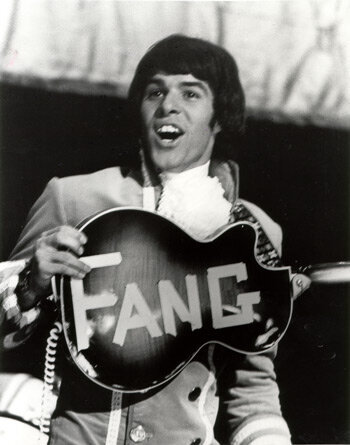
In early 1965 Phil Volk, who had gone to the University of Colorado on a scholarship, got a call from Drake telling him that The Raiders’ bassist had just quit and that he had talked Paul into giving his pal a try out. Having just gotten signed with Columbia Records, The Raiders were already in the studio cutting tracks for what would be their breakout album “Here They Come!” Phil needed very little convincing and. dusting off his bass, he immediately left school to pursue his rock n’ roll dreams. Apparently, his parents were in Europe at the time of the invite, and Phil sent them a telegram telling them he was dropping out of university to be a rock star, and by the time they received it he was on his way to Los Vegas to join The Raiders on the road. Performing signature dance moves while playing their guitars, Volk and Drake were completely in synch and made an exciting pair on stage which gained them the moniker “The Twins.” Phil also got the nickname “Fang” due to his penetrating teeth which emerged when he was smiling.
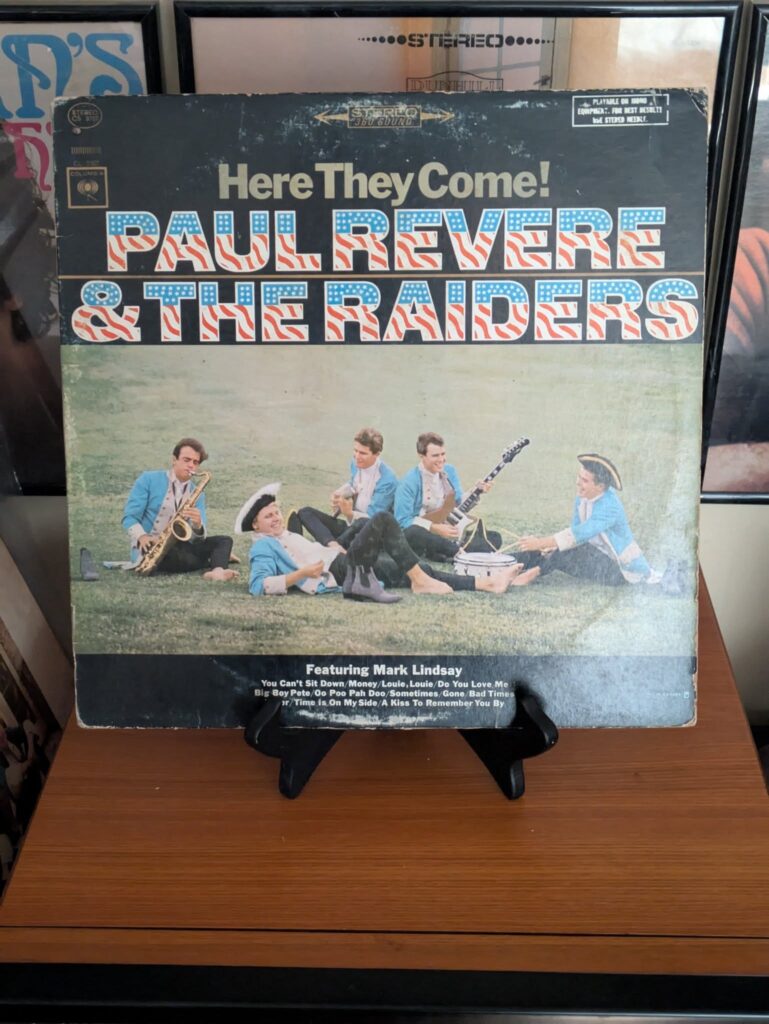
Although “Here They Come!” was the third full release for The Raiders, it would mark the turning point for the band despite being an unusually disjointed album. The first side of the disc was produced by Beach Boys producer Bruce Johnson and featured Mark and Paul, backed by Drake, Smitty and bassist Mike Holiday, who were pictured on the album’s cover. But side two of the album was noticeably different, and had a more dynamic thing happening. Produced by superstar producer Terry Melcher, who had been working with The Byrds, The Beach Boys and The Mamas and the Papa, side two introduced the audience to the classic line up of The Raiders for the first time – Mark Lindsay, Paul Revere, Mike Smith, Drake Levin and Phil Volk. The change in tone between the two sides is so distinct that it almost sounds like two separate albums. Side one is filled with primarily cover songs from an earlier era and tries to recreate the experience of a live concert. But side two is pure studio sessions with primarily new material, albeit inventive covers of “Fever” and “Time is On My Side,” and present The Raiders as a more contemporary band with a dynamic modern sound. Although “Here They Come!” didn’t produce any hits, Columbia executives could hear the difference between the two sides, and had faith in the future of their new group, sending Terry Melcher and The Raiders back into the studio for another round of recordings. Well, the gamble paid off because by the summer of 1966 Paul Revere and the Raiders would be one of the biggest rock bands in America.
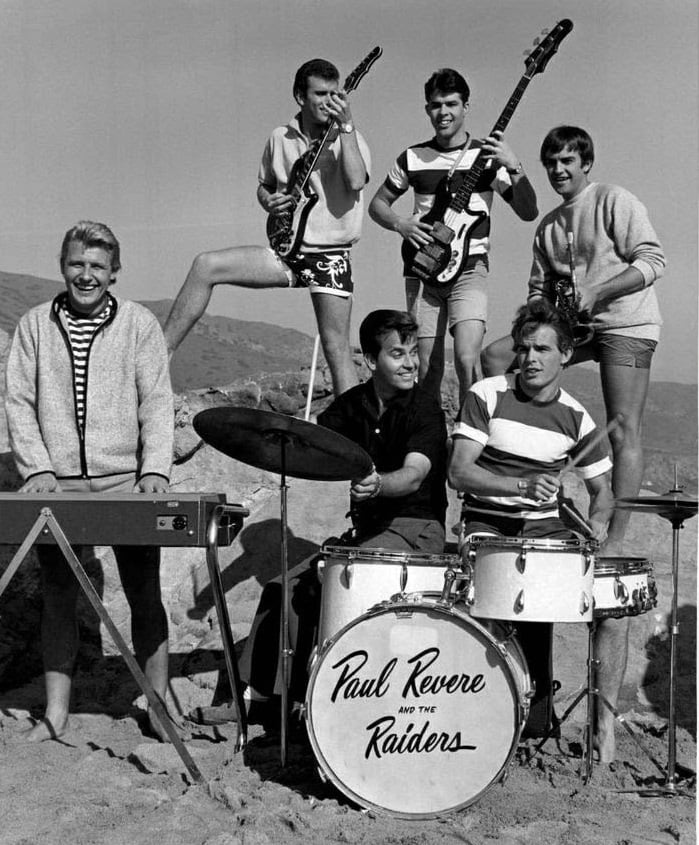
But prior to Billboard success, The Raiders would strike gold by endearing themselves to one of the most important men in American music, television host Dick Clark. A man who could make or break a careers via his Saturday afternoon dance show “American Bandstand,” Clark was expanding his enterprise by creating a daily after school series that would bring the latest pop acts into homes across America five days a week. Called “Where the Action Is,” the show would feature pop acts as well as regular performers lip syncing current hits to audiences in scenic locations across California and beyond. For the pilot episode Clark got an impressive selection of both established favorites and up and coming acts, including Diana Ross and the Supremes, Frankie Valli and the 4 Seasons, Chad and Jeremy, Jan and Dean, Frankie Avalon, Bobby Rydell and, most importantly, Paul Revere and the Raiders. Although they had not yet had a major hit, Clark saw the raw potential in them. Clark loved the group’s cartoonish revolutionary war gimmick, their high energy and their electric sound. With The Raiders having relocated their operations to Los Angeles, Dick Clark convinced them to join the series as the show’s “house band.” But Clark also had his own ideas of what he wanted Paul Revere and the Raiders to be. After the bizarre and surreal comedic antics of The Beatles via their second film “Help!,” Dick Clark was looking for a group that would be equally zany and strange. Well, Paul Revere considered himself a pretty funny guy, and idolizing Spike Jones, had a desire to mix comedy and music together. So in order to get full exposure on ABC-TV, The Raiders morphed from being a super-hot rock band into a daft combo of zany stooges. Although their antics were often more annoying than funny, The Raiders’ charisma and energy shone through, and they quickly became one of the most memorable elements on “Where the Action Is.”
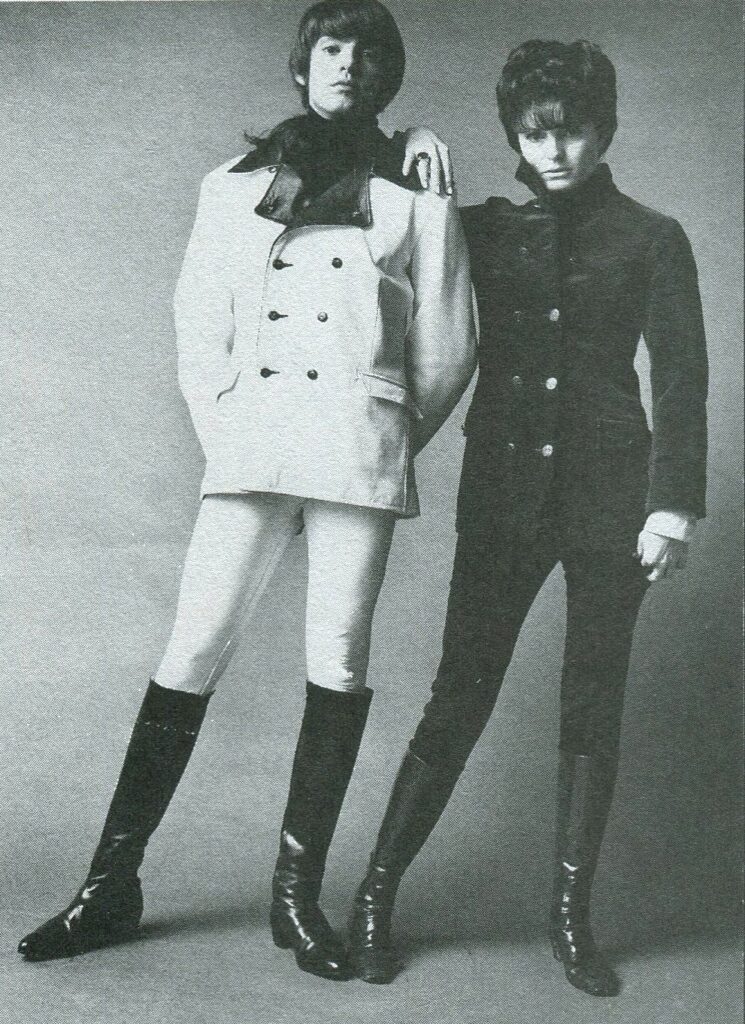
Meanwhile there was another influential media baroness taking an interest in the band. Gloria Stavers, publisher and editor in chief of the highly popular “16 Magazine,” was taking a keen interest in The Raiders and, most importantly, Mark Lindsay. Although dismissed by serious journalists and music fans alike, the influence that Gloria had in pushing the popularity of a star was undeniable, and the readership of “16 Magazine” was large and powerful. Perhaps teenage girls weren’t being respected for being the authority on contemporary culture, but they were the ones buying the records. Gloria began to feature The Raiders in all of her publications, exalting them to the same ranks of major players like The Beatles and The Rolling Stones.
But what should be noted is that Gloria Stavers and Dick Clark weren’t just featuring interviews and spotlights on Mark and Paul. They were trying to establish each member of the group as an important individual in the makeup of The Raiders. They were giving Fang, Smitty and Drake as much coverage as the band’s leadership, highlighting their own distinct personalities and making each of them fan favorites in their own right. Just as a fan might have a favorite Beatle, they could have a favorite Raider. For a brief moment in time, Drake, Smitty and Fang were just as much household names as Mark Lindsay and Paul Revere, at least in the homes of Raiders fans anyways.
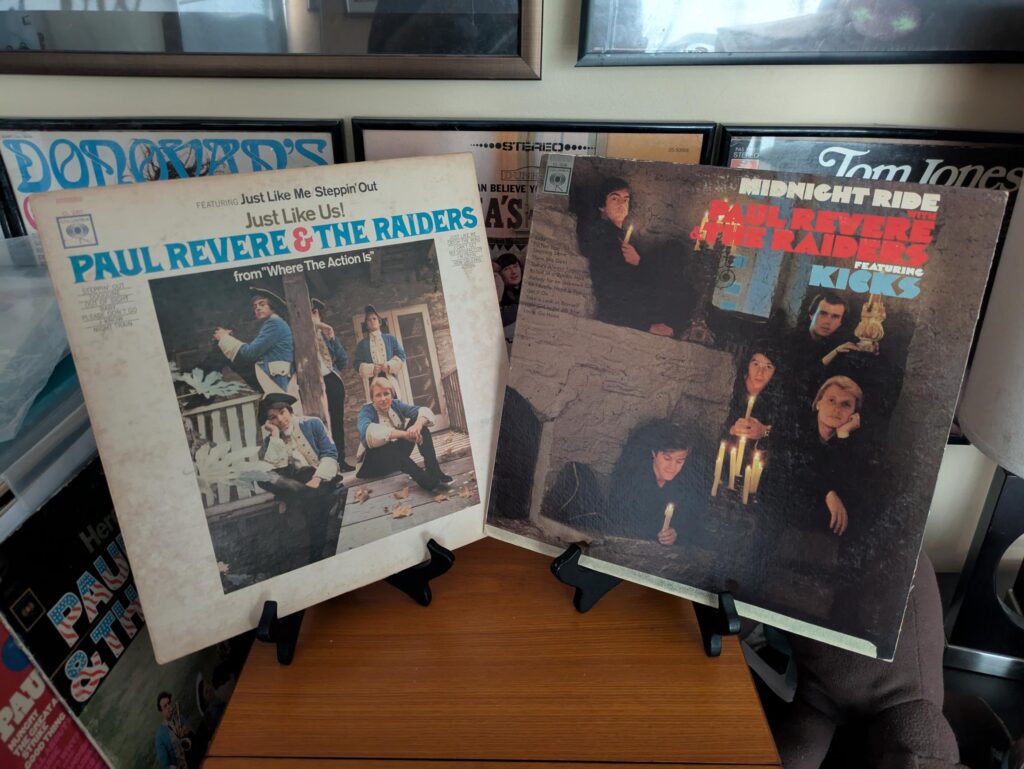
So, when The Raiders fourth album, “Just Like Us,” was released just on the heels of “Here They Come!,” with the double exposure from “Where the Action Is” and “16 Magazine,” the album exploded right out of the gate. Their first single, “Just Like Me,” quickly topped the Billboard charts at #5. “Just Like Me” proved that The Raiders was more than just a gimmicky group of clowns on an after school show. With Drake’s killer guitar solo, accompanied by Revere’s heavy organ licks, Fang’s pulsating bass and Smitty’s expert backbeat keeping time, Mark Lindsay killed it as lead singer proving himself to be in the same league of Mick Jagger, Eric Burdon or Ray Davies. Over the next year The Raiders would score another two massive top ten hits with “Hungry” and “Kicks.” Much heavier sounding than they’re after school reputation would have them to be, the production by Terry Melcher on these tracks were top notch, making The Raiders a major part of 1966’s rock ‘n’ roll soundscape.
But when you soar so quickly to the top, all there is to go is down, and during the production of 1966’s “Midnight Ride,” the cracks in The Raiders started to appear.
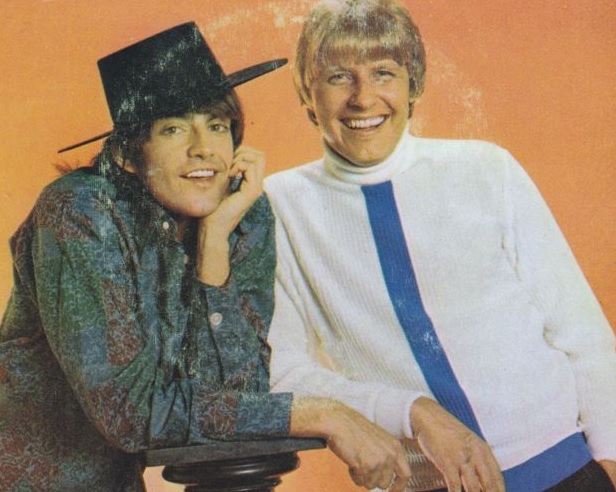
Most famously, the major conflict within the group was the toxic relationship which began to form between Mark Lindsay and Paul Revere. As the defacto leadership of the group, Mark became the face, while Paul took the role of the fool. Jealous of Mark’s popularity as both the heart throb and leading force behind The Raider’s popularity, Paul felt that he was losing his authority over the group, especially when Mark began working close with Terry Melcher in both production and creative control of The Raiders’ material. The animosity would eventually overflow to a full blown feud, which would never truly be resolved.
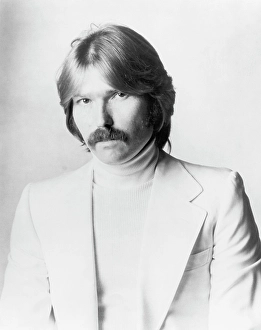
But what seemed to go much more unnoticed was the instability of The Raiders’ backline, which also began to crumble. Now having gained their own taste of fame, Drake, Fang and Smitty were looking to have a bigger part in The Raiders. Writing songs together since before they were even in The Raiders, Fang and Drake began to submit original songs to Terry Melcher, only to be told that “they were not commercial enough,” and being instantly rejected. Although Drake and Fang were both thrown a few leads vocal tracks, and a song written by Drake and Smitty called “There’s Always Tomorrow” appeared on “Midnight Run,” slowly The Raiders felt less like a cohesive unit as much as the backup group for Mark Linsday.
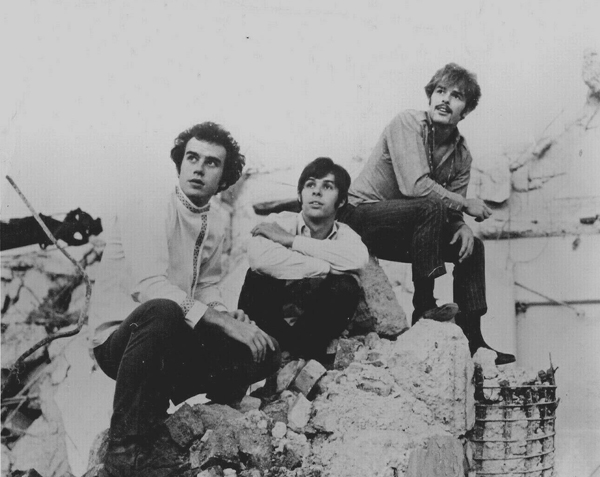
Meanwhile, the after school antics and dismissive attitude of serious music fans began to bother the members of The Raiders. In a national backdrop of riots, revolution, assassinations and war, instead of being actual “raiders,” both the management and Terry Melcher told the band to never be topical nor political as not to potentially alienate any members of their fanbase., Fang, Drake and Smitty had a desire to not only be taken seriously as musicians, but also actually write and talk about topical issues that were concerning them as individuals, but instead were regulated to remain inoffensive and irrelevant. As the backline of The Raiders were starting to grow up, the band was not supposed to grow with it.
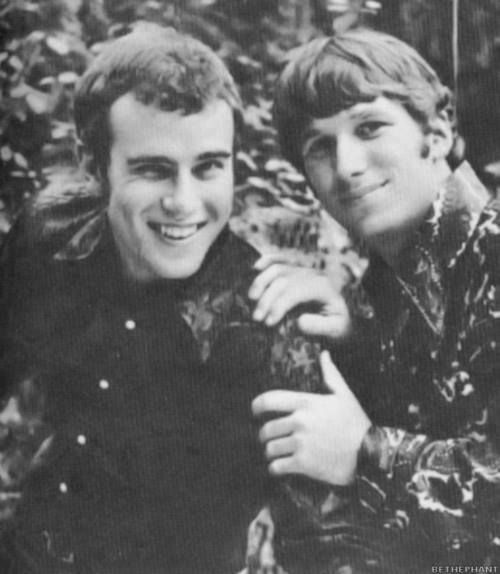
The first chink in the band’s armor was finally made when Drake was drafted into the National Guard, forcing him to step back from television performances and live appearances. Continuously on the road as the headliner to Dick Clark’s Caravan of Stars tours, and with constant television appearances keeping them in front of the cameras (it has been estimated The Raiders made over 750 television appearances, making them one of the most televised bands of the 1960’s), The Raiders were one of the busiest bands in America. Although he continued to play on the albums, Drake stepped away from the group and was replaced by Jim “Harpo” Valley, who played with another of “Where The Action Is’ regular groups, Don and the Good Times. As the new Raider, Harpo began to get the same press as the other Raiders, endearing himself to the fan base. However, his tenure with The Raiders would prove to be brief. Promised by Melcher that he’d get a vocal solo on “Midnight Ride”, Harpo was furious when it didn’t happen, and he quit the group.
Having been removed from the daily grind of The Raiders, which allowed him to do some serious soul searching, Drake recognized Harpo’s dissatisfaction with the way The Raiders was being run, which increased his discontent within the confines of the band. Upon getting out of the National Guard, Drake recorded a single for Parrot Records called “Glory Train,” but despite a push by Dick Clark on “American Bandstand,” it didn’t get any attention. Evenmtually, in early 1967, Drake returned to The Raiders, telling Gloria Stavers that it was “As a favour to Harop.”
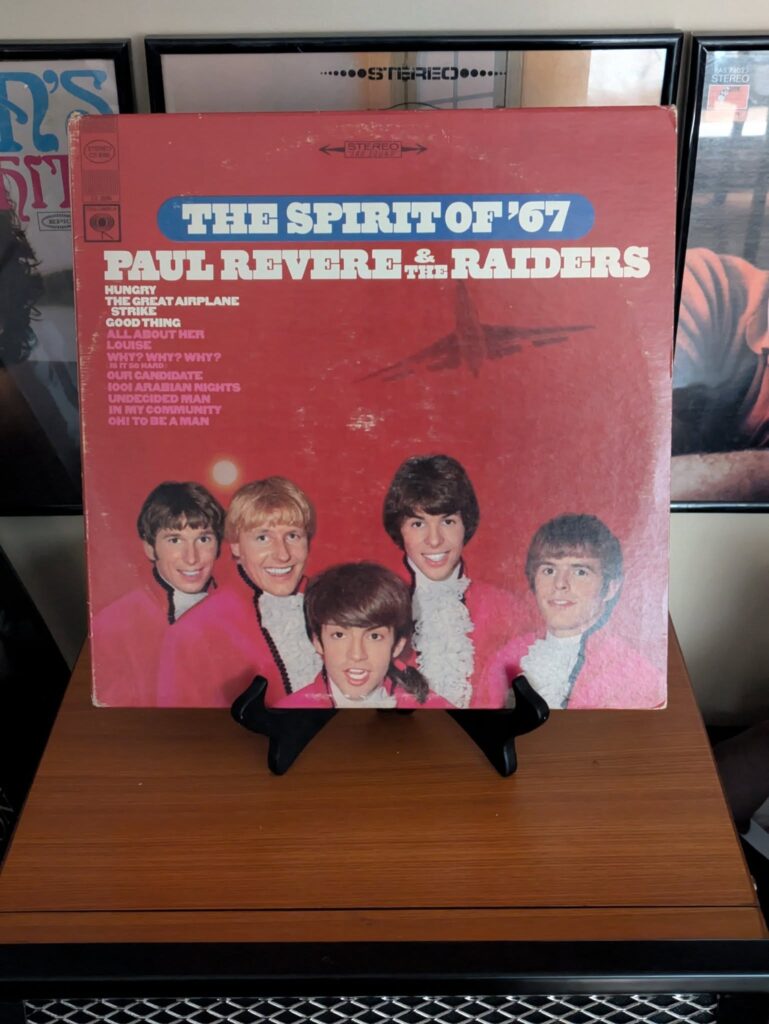
By this time Terry Melcher and Mark Linsday were heavy into the preparation of what would be The Raiders’ greatest achievement, “The Spirit of ’67.” Holed up at their shared residence at 10050 Cielo Drive in the Hollywood Hills (which would incidentally become the future location for the murder of Sharon Tate and friends at the hands of The Manson Family – see our Vinyl Story “Paul Revere and the Raiders – The Spirit of ’67 (1966) for full details), Melcher and Lindsay had a distinct plan for the future of The Raiders. But what was now evident is that the individuals in the band no longer were deemed as important as the overall production, especially when Melcher convinced Lindsay to allow him to bring in superstar session musicians The Wrecking Crew in on the album, thus making Drake, Smitty and Fang’s role essentially redundant. There has been debate on just how much of The Raiders’ backline were replaced by The Wrecking Crew for “Spirit of ’67”, but this seemed to be the final blow that would finally destroy the original Raiders lineup.
During a camping trip soon after the taping of the final episode of “Where the Action is,” which went off the air in March 1967, Smitty, Fang and Drake confided in one another about their unhappiness with the current direction of The Raiders, as well as their desire to make more groundbreaking and experimental music that might reach a different sort of audience. Burnt out from constant touring, deflated by continuous rejection and jilted by the use of studio musicians, The Raiders’ backline was looking for peace of mind in a whirlwind of promotion and marketing commitments.
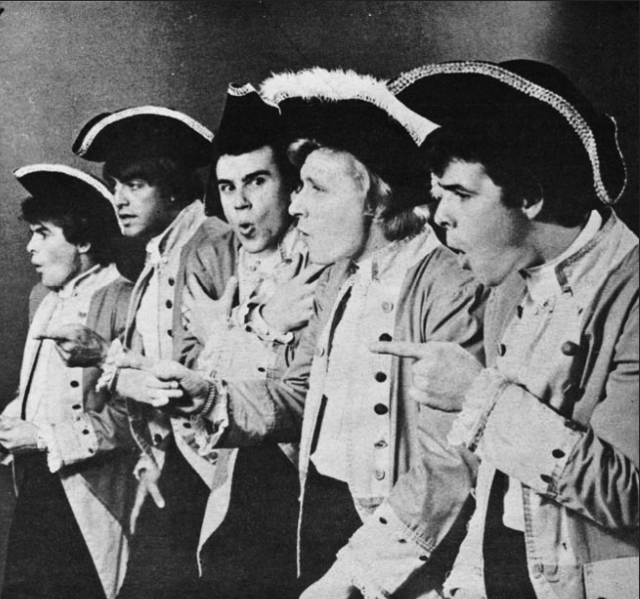
Shortly afterwards, only weeks before the release of “The Spirit of ’67,” Drake went to Smitty and Fang and announced he’d be leaving the band. Telling them that they should do what they wanted to do, he had given all he could give to The Raiders. Well, if Drake was leaving, Smitty and Fang decided they were going with him. After a concert in Baltimore, the trio went to Paul Revere and told them that they were leaving the band after their final television commitment, which just happened to be their debut on the biggest entertainment showcase on television, “The Ed Sullivan Show.” To say the least, Paul did not take the news well. With his relationship with Mark eroding, he felt both betrayed and abandoned by the rest of the group but accepted their decision. However, Paul would blame Drake for being the instigator of The Raiders revolt and would get his own harsh revenge.
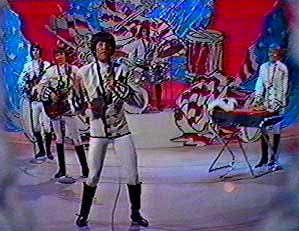
On Sunday April 30, 1967, after a few weeks away from the group, Drake showed up at The Ed Sullivan Theatre for his last appearance with The Raiders. The Raiders were to debut their next two upcoming singles, “Good Thing” and “Him or Me (What’s It Going to Be)” live on the broadcast, along with a medley of their greatest hits. However, when Drake got to the stage, he was informed that during his absence Paul had already hired a brand new guitarist, Freddy Weller, who he had recruited without the knowledge of the rest of the band. Not only that, Paul was putting Freddy on the show instead of Drake, denying Drake not only his final farewell as a Raider, but his chance to be on “Ed Sullivan.” So what was Drake to do? Well, he did exactly what a professional would do. He kindly went over the number with Freddy, teaching him the chords to the songs, and shook his hand and wished him luck. As his bandmates made their Sullivan debut, Drake Levine watched from the wings. The Ed Sullivan performance would be a major moment in Raiders’ history as not only the first and only time they’d perform on the show, but the end of The Raiders first golden age. After the broadcast, Phil Volk and Mike Smith also immediately departed The Raiders..
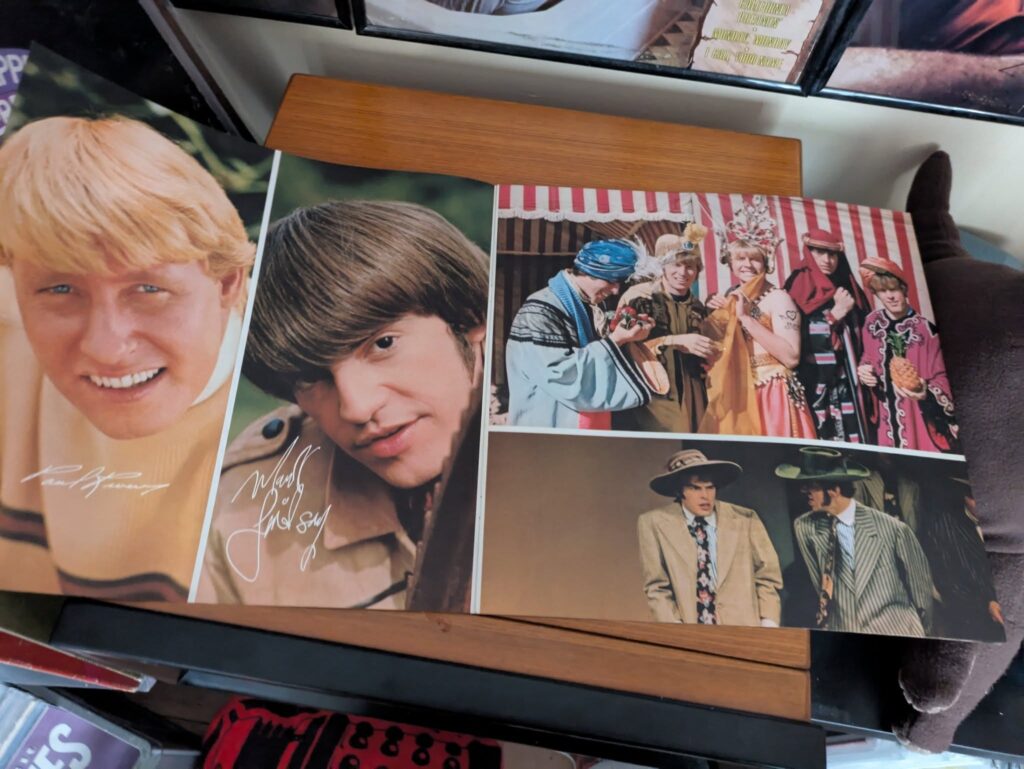
Although The Raiders seemed to be in shambles, 1966 and 1967 would prove to be a massive year for the group where they’d rise even higher than ever before. “The Spirit of ‘67” was released in November 1966 and was, by far, their best album, with “Good Thing” racing to the top of the charts and peaking at #4. To keep the momentum going, Columbia rushed out a “Greatest Hits” collection in May 1967. With Paul, Mark, Fang, Drake and Smitty all smiles on the front cover, the album was a true celebration of The Raiders that the fans had gotten to love. The album not only contained all the hits, but the best of the Terry Melcher produced Raiders tracks, and contained a “Deluxe Souvenir Photo Book,” which was really little more than a glorified insert filled with pin upa and photos from “Where the Action Is.” However, one Raider was omitted from getting his own large sized “pin up” in the insert…. Drake Levin. Still, the book was a bittersweet tribute to The Raiders for a fanbase that barely realized that the group on the album cover no longer even existed. “Greatest Hits” became one of the bestselling albums of the 1967 and was certified gold. Still today it is probably the easiest Raiders album to find in record stores, and an affordable gateway into discovering this incredible overlooked group.
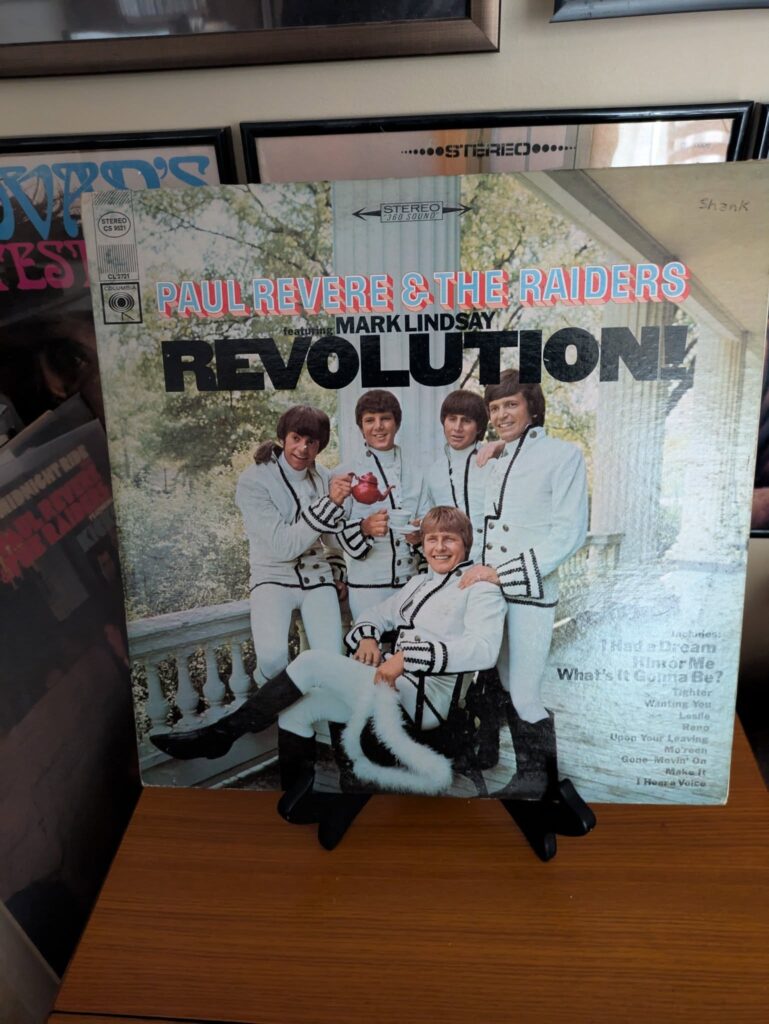
By the summer of 1967 The Raiders were back in the studio with a brand new line up consisting of Paul and Mark, with Freddy Weller on lead guitar and “new Raiders” Joe Correro on drums and Charlie Coe on bass (Coe would quickly be replaced by friend of The Raiders, and former “Where the Action Is” favorite Keith Allison), and their next album “Revolution” was released in August 1967 with the single, “Him or Me (What’s It Going to Be)” rising to #5 on the Billboard chart. Although the group had an all new backline, it seemed like a seamless transition. However, creating the illusion was the heavy presence of The Wrecking Crew to mask any lack of unison between the “old guard” and the new members. In an attempt to showcase the new members of the group, both Dick Clark and Gloria Stavers put their publicity magic in motion, spotlighting the new Raiders on television and in the magazines. The Raiders would continue to put out additional top 20 hits, including “Too Much Talk” in 1968, and “Mr. Sun, Mr. Moon” and “Let Me” in 1969 before scoring their only #1 hit in 1971 with “Indian Reservation (The Lament of the Cherokee Reservation Indian).” In an attempt to be taken more seriously, the band finally shed the Revolutionary War gimmick, and with Mark Lindsay taking full creative control over the material, finally began to put political and topical issues into their songs. They even got themselves back on television as the hosts of Dick Clark’s “Where the Action Is” follow up series, “Happening,” which kept the group in the public zeitgeist, but also further hurting their credibility by turning them into kid show hosts instead of the rock n’ rollers they actually were.
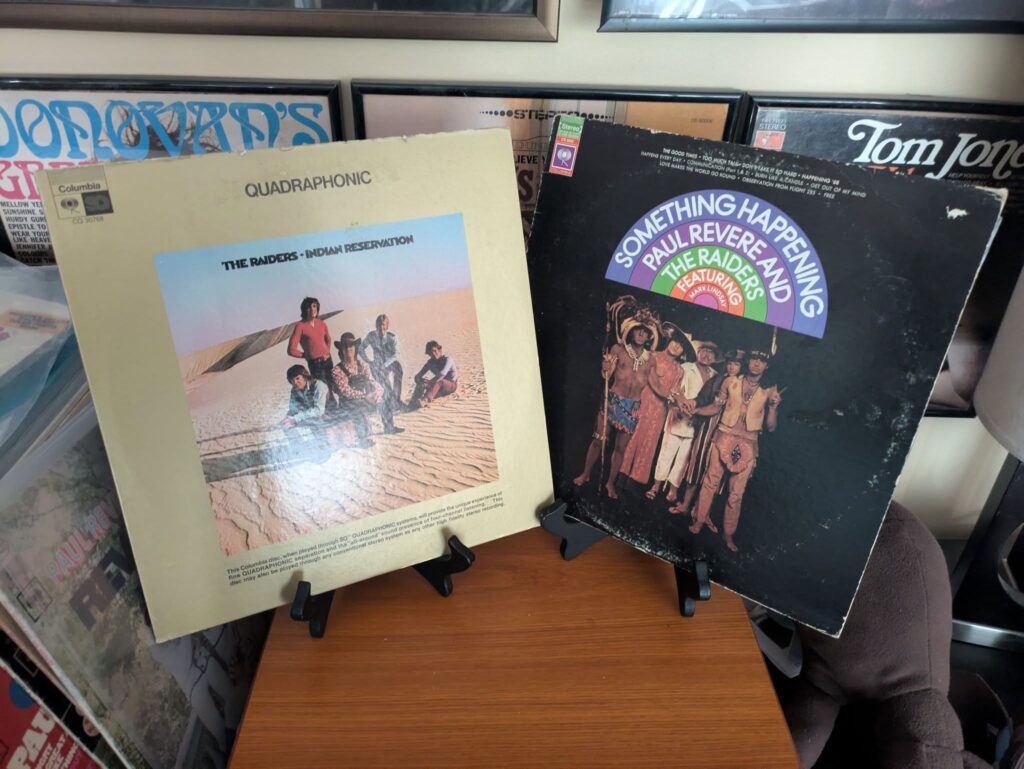
But despite the continued success of The Raiders after the loss of Fang, Smitty and Drake, the cohesiveness of The Raiders seemed to be in a constant downspin. As the relationship between Mark and Paul continued to worsen, Mark produced a trio of his own albums, having solo success with “Arizona.” Making more frequent appearances without The Raiders throughout the early 70’s, Mark eventually abandoned The Raiders completely in 1975.
But what about Fang, Drake and Smitty? Where were they in the middle of all this? Well, despite being bogged down in multiple lawsuits due to their sudden departure from The Raiders, they kept it together long enough to form The Brotherhood, but that’s another Vinyl Story.
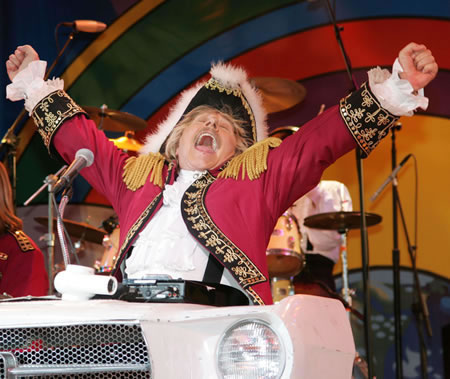
Paul Revere kept The Raiders going long after the band’s glory days, eventually being the only original member left performing corny music/comedy shows in Branson, Missouri. If you didn’t think Paul Revere was funny in the 1960’s, his brand of comedy only got worse. Even years after his death in 2014 a band calling themselves “The Raiders,” containing no members of the original hit making group at all were making the oldies circuit. According to Wikipedia, 37 different musicians have been members of The Raiders at one point or another. It seems that, for Paul Revere anyway, his players became little more than just hired help, and a guitarist, drummer and even a lead front man could be swapped out for another performer.
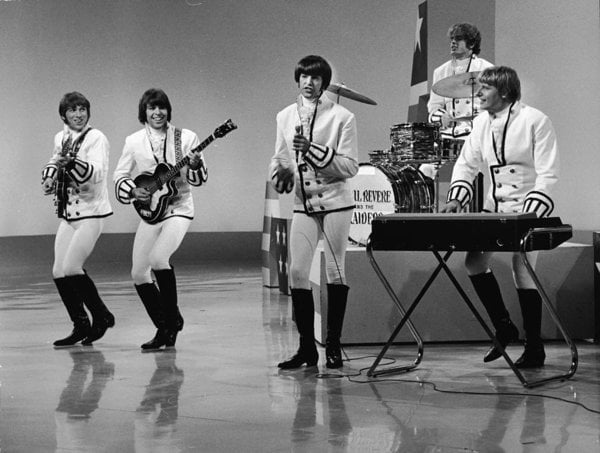
Some die-hard Raiders fans will fight over the legitimacy of The Raider line-ups that would come, arguing that many of them were in Paul’s group far longer than any of the hit making members. But to me, this argument only cheapens the legacy of The Raiders, and perhaps that is why the group continues to be pushed aside from receiving the iconisim that they deserve. Sure, Mark Lindsay and Paul Revere were the stand out members of The Raiders, but during the rise to the top Smitty, Fang and Drake helped create that dynamic sound, created on stage excitement and were equally admired by The Raiders loyal fanbase. Every successful rock band has their core backline, and The Raiders had one of the very best.



